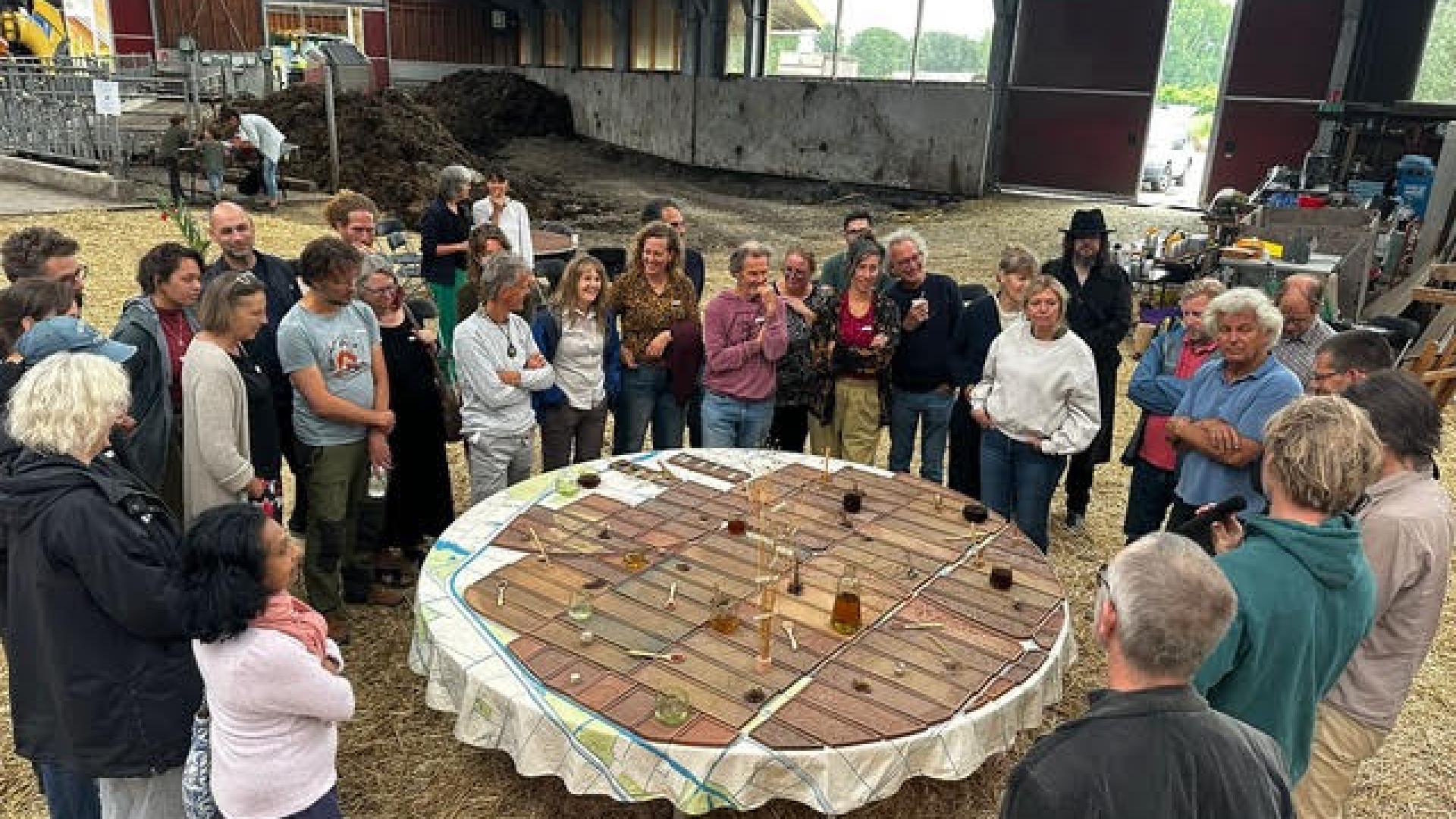A semi-agricultural residential and working area covering 4,300 hectares between Almere and Zeewolde
Flevoland has the best agricultural land in Europe and, as the Netherlands' leading agricultural province, is important for the international food supply. The farmsteads lie like green islands in the open landscape, which consists mainly of straight polder lines and plots.
Oosterwold is located in southern Flevoland, between the Oostvaardersplassen Natura 2000 area, the large Horsterwold forest complex and the urban forests of Almere. The A27 motorway runs through the area, connecting the Gooi with the A6.
The co-creation sessions for the further development of Oosterwold take place in the local area office. On the table is a cloth with a map of the area's waterways and nature reserves. On top of it are plates made from Flevoland clay, representing the plots. The plates, designed by Atelier NL, depict various subjects, such as the different soil types: sandy loam, heavy clay and light clay. And in the height of the clay, you can see both the subsidence and the riverbed and channels – the area where most archaeological finds are made.
Unique experiment
In 2013, the municipalities of Almere and Zeewolde, the Central Government Real Estate Agency, the Province of Flevoland and the Zuiderzeeland Water Authority opted for organic area development in Oosterwold (link: www.maakoosterwold.nl). This means that residents not only build their own homes, but also decide for themselves on the construction and management of their roads, paths, green spaces, energy supply, water and public spaces. Instead of rules, five ambitions were formulated for the development of the experimental area:
1. Organic growth – Oosterwold is being developed by initiators. People make the city.
2. Maximum freedom – There are as few rules as possible in Oosterwold.
3. Continuous greenery – Oosterwold makes room for roads, water, greenery and urban agriculture.
4. Urban agriculture – Approximately 50 percent of the area is reserved for (urban) agriculture.
5. Sustainable and self-sufficient – Everyone in Oosterwold takes care of their own energy supply, recycling and water storage.
More than 1,700 initiatives have already been realised in part 1 of Oosterwold. That's 2,007 homes and 5,200 Oosterwolders. In time, there should be at least 15,000 homes.
About MooiNL and Possible Landscapes
In the Possible Landscapes project, MooiNL and Biobased Creations are investigating possible scenarios for a changing landscape, in which spatial quality is central. After all, everyone wants to live in a beautiful environment with a recognisable identity (perceived value). An environment where there is functional cohesion between people and nature (utility value). And an environment that is sustainably designed (future value).
To get there and bring everyone together, imagination is needed. Because what you cannot imagine, you will probably not promote. That is why the Ministry of the Interior has set up the MooiNL programme. The programme helps provinces and municipalities to properly shape the use of space by connecting and visualising ideas about the future of the landscape.
 Toilets available
Toilets available
 Fully wheelchair accessible
Fully wheelchair accessible
 Wheelchair friendly toilet available
Wheelchair friendly toilet available
